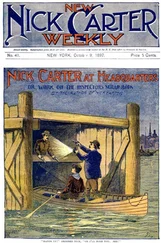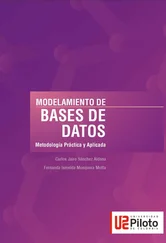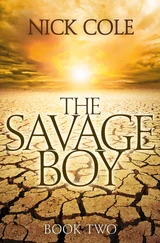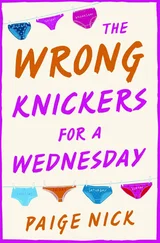The problem was that Haislip repeated his earlier mistake and left a loophole in the ephedrine legislation that allowed pills containing pseudoephedrine to remain unregulated, this despite the fact that DEA chemists had warned him that meth could be made from pseudoephedrine just as easily as from ephedrine. The loophole, according to Suo, was the direct result of intense lobbying, eight years after he’d derailed Haislip’s original anti-precursor bill, by Allan Rexinger, who proudly characterized his involvement to Suo by saying that he simply “pulled the plugs” on DEA. In fact, pointing traffickers to pseudoephedrine was the biggest favor that anyone could have done for the makers of meth; it set the stage for fifteen years (and counting) of arguably the worst period in American narcotic history.
From a drug chemist’s standpoint, ephedrine and pseudoephedrine, or pseudo, are identical; good crank can be made from both. But from a drug trafficker’s standpoint, pseudo is far superior. Ephedrine, as a licit pharmaceutical, has a strictly limited number of uses: first, as a stimulant used to bring surgery patients out from under anesthesia, and second, as a nasal decongestant. Pseudo, on the other hand, has for three decades been the dominant ingredient in cold medicine, 80 percent of which was (and remains) controlled by American companies. As such, the availability of pseudo in the world, along with its importance as a revenue source, is many orders of magnitude greater than that of ephedrine. And because pseudo is deemed the most reliable precursor for megadrugs like Sudafed, Actifed, and NyQuil, the drug lobby protecting pseudo is many times more powerful than that protecting ephedrine, which had already shown a proven ability to cripple DEA.
By 1996, the Amezcuas were in jail. In their absence, other Mexican drug-trafficking organizations, only too aware of the lucrative potential of meth, had begun to fill the Amezcuas’ shoes. Slowly, those loosely defined organizations were melding into what DEA would come to call the five major DTOs, each of which was destined to quickly become many times more powerful than the Amezcuas had ever been. The DTOs were aided by the wider opening of the border and the expanding immigrant presence in the United States engendered by NAFTA. Within the population of illegals streaming across the border to work in meatpacking plants throughout the Great Plains, in the fields of California’s Central Valley, and in the orchards and orange groves of the Southeast, there was unlimited potential for a narcotic retail and distribution force. One that, because it was nationwide, mobile, undocumented, and protean, was almost impossible to track by law enforcement. In addition, the DTOs controlled the manufacture of meth by following Amezcua’s practice of importing precursors into Mexico, thereby achieving business’s holy trinity: dominance of the entire value chain. In one fell swoop, the Mexican drug traffickers directed every aspect of what was now a major international narcotics phenomenon—in the same way that Cargill, Tyson, and ADM were taking control of the food business “from plow to plate,” as the marketing slogan went.
Within months of Haislip’s newest legislation, the nascent DTOs made the switch to pseudoephedrine combined with red phosphorus. This new Red-P, or Mexican dope, was considered to be more powerful still than the old P2P meth of Lori Arnold’s day, especially when the traffickers soaked the powdered Red-P in refrigerated trays of denatured alcohol, a process that turns the drug into the pretty, icelike shards that would come to be known throughout the world as crystal meth. This more powerful form of the drug again increased the DTOs’ range and effectiveness, for the simple reason that it was more addictive, allowing them to saturate old markets even as they opened new ones.
The move to pseudo was really the blockbuster moment in the modern history of the meth epidemic. That’s because the DTOs were able firmly to tie the fate of their illicit product to perhaps the world’s most lucrative legal drug. This, really, is the genius of the meth business. Cocaine and heroin are linked to illegal crops—coca and poppies, respectively. Meth on the other hand is linked in a one-to-one ratio with fighting the common cold. Not only was the pharmaceutical industry likely to fight harder against pseudoephedrine monitoring than it had regarding ephedrine, but the shear bulk of pseudoephedrine being produced also made it difficult to track compared with the relatively small amount of ephedrine being manufactured. Add to that that 50 percent of the world’s pseudoephedrine was (and is) manufactured in China—a nation that has been increasingly unwilling to negotiate with the United States—and Haislip’s dream of international cooperation in monitoring meth’s precursors had, after a short and unprecedented victory, fallen completely apart.
Still, Haislip wasn’t done. In 1995, he proposed a bill stipulating that any company wishing to sell more than four hundred tablets of pseudoephedrine at a time would have to get a license from DEA and would have to keep records of its sales—hardly, notes Suo, a rigorous law. But it would have at least given the DEA’s Office of Diversion Control a place to start in the inevitable task of identifying companies that diverted large amounts of pseudoephedrine to the meth trade. This time, it was not Allan Rexinger who came to the aid of the big drug companies; it was Senator Orrin Hatch, Republican of Utah, then chairman of the Senate Judiciary Committee.
Senator Hatch had a history of aiding the pharmaceutical industry, and had, among other things, supported legislation curbing federal regulation of dietary supplements, namely Methedrine, a form of methamphetamine illegally prescribed by the billions of pills during the 1970s and ’80s. What the Hatch camp wanted in 1995 was proof that pseudoephedrine was being used to make meth. DEA had what it thought to be incontrovertible verification: nearly a quarter of all the meth superlabs it had dismantled in the last year had already made the switch from ephedrine to pseudoephedrine. Even in labs that were still using the old method, agents had founds bills of lading for bulk orders of pseudo, a further indication that the market was in the midst of a dynamic shift. Hatch, though, didn’t consider this compelling enough, and he tabled the proposal by calling for more investigation.
Haislip was distraught. Despite help from Senator Dianne Feinstein of California, the bill languished with Hatch’s committee for over a year—while the DTOs’ production of crystal meth went unhampered. It wasn’t until the spring of 1996 that Hatch and Haislip finally agreed on language that was acceptable to both the government and the pharmaceutical companies: vendors of pill-form pseudoephedrine would be subject to DEA licensing and bookkeeping unless those pills were sold in the now-ubiquitous clear-plastic containers with aluminum backing. Hatch’s logic, it seems, was that the narco-empire built around methamphetamine would crumble in the face of the tamper-proof blister pack.
The connection that Steve Suo doesn’t make explicit in the Oregonian is that the aggregation of the Mexican drug traffickers during the 1990s into five enormous DTOs mirrors the consolidation of the pharmaceutical industry in that same period. As both types of organizations grew, they increased their market share, their wealth, and their power. Warner-Lambert was subsumed by Burroughs Well-come, which was ultimately added, along with Pharmacia, to the pharma-titan Pfizer. That’s to say, over a short period in the 1990s, fewer companies shared increasing profits. In 2003, Fortune 500 rated the U.S. pharmaceutical business the third most profitable in the nation and valued the industry at $593 billion. (That was the first year since 1995 that the industry had not been rated the number-one most profitable American industry.)
Читать дальше












